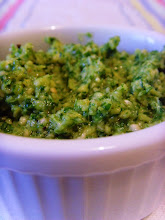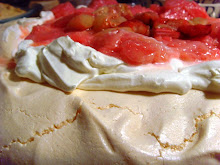The husband and I are worried that we may be turning into a parody of ourselves. When making the transition from an urban existence in London to the much-longed-for country life, we were keen to fit in and avoid potential hostility from the neighbours who had lived in the area for a lifetime. In our eagerness to look the part, we may perhaps have gone a little far...
The black labrador was really a non-negotiable and, to be fair, he was part of our lives before we made the move. From black labrador, it was a very short step to the Barbour jacket. An essential for muddy walks, I would argue. Green wellies too are a necessity (in the city I'd favoured a more flamboyant floral wellie but when these sprang a leak, I felt that only green would do). Soon after, I invested in a
Driza-Bone hat. This too seemed necessary for dog walking - my bright pink umbrella screamed 'townie' and is hardly practical when carrying dog lead, whistle, poo bags, dog treats and other canine-related paraphernalia. So far so good...
But then the husband decided the time had come to buy a flat-cap. This, he argued, was a necessity for keeping his head warm and dry on early-morning walks (...and trips across the fields to the local pub, no doubt). I was uncertain but came round to the idea once I'd seen it on. As yet, it remains unworn. He's put it on a few times and then removed it in a state of uncertainty - is it just one step too far? Are we taking country living a little bit too seriously? After all, he managed dog walks on cold mornings in London perfectly well without the need for such a garment.
 |
| Enjoying the countryside |
It doesn't end here however. Our eating habits have changed too. Not only do we find ourselves in possession of the obligatory Aga (serviced today and firing up nicely as I type), but we also find ourselves living off the land in a way we haven't done since we were children. Aside from a few efforts at 'growing things in pots' in my London courtyard garden, eating food from the garden and hedgerows is something I've not done in any significant way since I was young. Our garden has three apple trees, a plum tree and a pear tree and we've been enjoying these enormously. Dog walks have become missions in picking as many blackberries as we can carry and Sunday afternoons have become sessions of chutney-making and cake-baking. What could be more enjoyable?
I suspect that our neighbours may be laughing at us as we stagger home with punnets of foraged fruits. Whilst this is still a novelty for us, I suspect they enjoy the fruits of the land in slightly less greedy quantities knowing full well that a person cannot physically eat sixty jars of chutney before next year's crop of apples. We are clearly a little more eager than most.
But, who really cares what the neighbours think? We are loving our new life and have no shame when it comes to helping ourselves to what nature offers up (...though we do leave a little for others to enjoy!).
 |
| Blackthorn bushes drowning in sloes |
Our latest haul has been of sloes. Sloe gin is a real favourite of mine and this year seems to be particularly good for sloes. The hedgerows are positively drowning in these little black fruits so we didn't feel too bad helping ourselves to a good haul.
There is much debate surrounding when one should pick sloes and how to make the best sloe gin. I've read it all and come to the following conclusions...
1. When to pick?
It is best to pick sloes after the first frost of the year. They may look enticing in September, but it really is better to wait until late October or early November. I'm not sure why this is, but it does seem to improve flavour. I picked mine a few weeks ago. We'd had a frost and they looked good. But yesterday, I picked a whole lot more with my sister for her to take home. They were noticeably riper, bigger and juicier. I wish I'd been a little more patient and waited longer... One further tip - pick only the sloes which are showing a whitish 'bloom'. Leave the totally black sloes behind.
 |
Sloes: pick those with whitish bloom
and wait until after the first frost |
2. To freeze or not to freeze?
Some advise that sloes release more flavour if they are frozen prior to use. I suspect this may be true for those picked earlier - a stimulation of the frost perhaps. I'm not sure of the science here but, as I picked mine a touch early, I washed and dried my sloes carefully and then popped them in the freezer overnight. This does cause the some of the skins to split, helping to release the juices and flavour.
3. To prick or not to prick?
Traditionally, one is advised to prick each sloe by hand before adding to the gin to release juices. This could be described as tedious and time-consuming. It could also be described as satisfying and strangely therapeutic. Some argue that freezing the sloes overnight causes the skins to split and therefore does the same job but I found that most of my sloes remained intact despite freezing. I decided to prick mine. I used a needle which I sterilized by washing in very hot water and dipping in gin!
4. Any old gin or high-quality gin?
Tricky one here. Does it really matter what kind of gin you use? I'm of the view that a recipe is only as good as its ingredients so I therefore feel it does matter. Having said that, I wouldn't use an expensive brand. I think it is important to use a gin which is over 40% alcohol. I wouldn't choose to drink a gin under this - I once studied a course on spirits and was led to believe that higher alcohol brings out the flavour of the different botanicals which give gin its flavour. Below 40%, you don't get a 'full' experience. So, I looked for a special offer on a gin which had 40% min. alcohol. Tesco had an offer on litre bottles of Greenalls gin, so I went for that.
5. What to add to your gin?
The classic 'recipe' calls simply for sloes, sugar and gin and that works for me. But I've read that other flavours work well so this year I've added almond essence to one of my bottles. Over at
Dinner Diary, Kerri has experimented with a delicious-sounding spicy sloe gin. I can't wait to hear how it turns out!
6. How long do I have to wait?
Oh dear. This is where I come unstuck. I'm not the most patient of people, it has to be admitted. I know that sloe gin gets better with age. I know that to enjoy it as its best I should wait a year. But I'm afraid that come Christmas Day, I may just have to have a teeny, tiny sip. Just to see how it is coming along, you understand! Basically, the gin is 'ready' after three months but really you should try to keep it longer!
7. When and how should I drink it?
Sloe gin is a wonderful pick-me-up at any time. Wait! That doesn't sound good. I'm not suggesting you start on it at breakfast time. But seriously, I love to enjoy a small glass after dinner in front of the fire. Or a little swig from a hip flask on a really cold day when out for a walk. But it can also be delicious incorporated in a cocktail. My favourite is a 'sloegasam' (apologies - I didn't invent the name). Half a shot of sloe gin, topped up with Champagne or sparkling wine. Yum. More cocktail ideas are
here.
Here is how we made ours. You will need some empty bottles or kilner jars.
Sloe gin
1. Pick as many sloes as you can find. Wash and dry them, then prick each sloe with a sterilized needle or pin.
2. Take a litre bottle of gin and pour half the gin into a jug. Put to one side.
3. Using a funnel, pour in approx. 150g sugar.
4. Top up the bottle with the pricked sloes until the level of gin has risen almost to the top. Seal tightly. Pour remaining gin into another bottle or jar and repeat steps 3 and 4.
 |
| Topping up with sloes, one at a time... |
5. Give the bottles a little shake to combine. Do not worry if, at this stage, the sugar all collects at the bottom. With time, it will dissolve.
6. Store in a cool, dark place away from greedy paws. For the first week, you should turn/shake the bottles a little each day. You should then continue to do this once a week for three months. Taste occasionally and add more sugar to taste if required.
7. After three months, decant the gin off the sloes into pretty bottles. It is ready to drink although it will improve in bottle over the coming months.
Notes: the 'used' sloes can be put to good use too. I've seen recipes for sloe gin jelly, sloe gin cake and sloe gin chutney. I'll report back once I decant the gin off the sloes later in the year!







































































